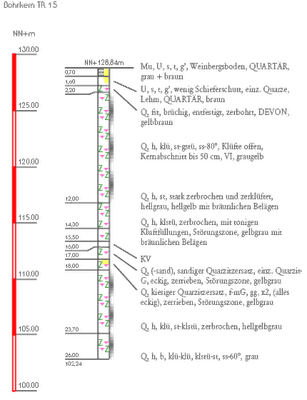Beethovenian wine
Posted on 12 February 2009
Gave an interview about Beethoven and wine today. (For those not in the know, my academic background and current secondary occupation is musicology, or more precisely music history of the nineteenth century). It will be published in the programme magazine of the Easter Beethoven Festival here in Warsaw, and I was asked to speak about wine in the times of the great German composer, consumption habits, wine styles etc.
One of the questions was the inevitable ‘What wine would you compare Beethoven’s music to?’. Dreadful. I dislike comparing music to wine (I find it acceptable the other way round); wine is not an art, and no wine however thrilling can approach the intellectual complexity of a piano prelude, let alone the Symphony No. 9.
So I returned my interviewer’s question, offering to taste a couple of wines that Beethoven himself enjoyed (in their 1820s form, of course). One was a Riesling from the Rhine village of Rüdesheim – Beethoven specifically asked for a Rüdesheimer on his deathbed, and was sent a case, but the wine arrived too late. The Georg Breuer Rüdesheim Estate Riesling 2007 showed its usual, finely poised self: an effortless blend of schisty minerality, appley fruit, smacky acidity and some well-judged residual sugar. In Beethoven’s time, this would surely have come out hazier, dirtier, more oxidative, and likely not mineral at all. But it would have been a Riesling, and the Rüdesheim provenance was already recognized as one of the most prestigious in Germany, so today we have a direct link with the broad style of white wine he drank.
A Beethovenian red wine is slightly more tricky. The early 19th century saw an expansion of French wines – Bordeaux, Burgundy and Rhône – but customs and taxes were so high that imported wine remained a luxury item in the Austrian Empire. Common people drank ‘imperial’ wines, i.e. anything that came from the territory of the Empire. Looking at the map,  the choice was between Valpolicella, some reds from Veneto perhaps (Raboso?), Dalmatian Plavac, Hungarian field blends. But the major supplier of wine for the Viennese was Vienna itself – its vast vineyards spread from Krems to the west to Wiener Neustadt to the south-west and Gumpoldskirchen to the south. While the majority of this wine was white, the early 1800s saw a gradual confirmation of Blaufränkisch as the dominant red variety. So I picked up the Gesellmann Hochäcker Blaufränkisch 2006. Of course this vintage has little to do with the vinegarish 10% pale reds Beethoven and his contemporaries must have been drinking back then, but this ruby-red, airy, crisp, spicy-vegetal, Pinot Noir-like, eminently-refreshing wine somehow seemed just right for the occasion.
the choice was between Valpolicella, some reds from Veneto perhaps (Raboso?), Dalmatian Plavac, Hungarian field blends. But the major supplier of wine for the Viennese was Vienna itself – its vast vineyards spread from Krems to the west to Wiener Neustadt to the south-west and Gumpoldskirchen to the south. While the majority of this wine was white, the early 1800s saw a gradual confirmation of Blaufränkisch as the dominant red variety. So I picked up the Gesellmann Hochäcker Blaufränkisch 2006. Of course this vintage has little to do with the vinegarish 10% pale reds Beethoven and his contemporaries must have been drinking back then, but this ruby-red, airy, crisp, spicy-vegetal, Pinot Noir-like, eminently-refreshing wine somehow seemed just right for the occasion.
I’ll leave with Beethoven’s scherzo from the Symphony No. 9, written on the upper floor of the Mayer am Pfarrplatz winery.


